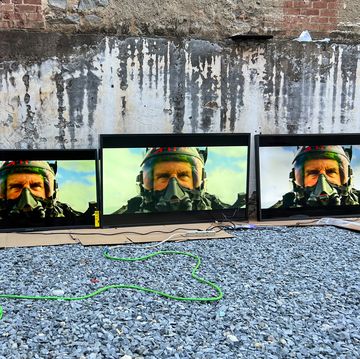- Artificial intelligence is now able to decode brain activity to unlock emotions, productivity, and even pre-conscious thought, according to a futurist.
- Wearable technology that’s already available is assisting the brainwave-monitoring technology.
- This new world of surveillance has multiple avenues for good or bad.
It wasn’t like Duke University futurist Nita Farahany wanted to bring nonstop doom and gloom during her recent “The Battle for Your Brain” presentation at last week’s World Economic Forum in Davos. But maybe she wanted to alarm us at least a bit. According to her, the technology to decode our brainwaves already exists. And some companies are likely already testing the tech.
“You may be surprised to learn it is a future that has already arrived,” Farahany said in her talk, which you can watch below. “Artificial intelligence has enabled advances in decoding brain activity in ways we never before thought possible. What you think, what you feel—it’s all just data—data that in large patterns can be decoded using artificial intelligence.”
Using wearable devices—whether hats, headbands, tattoos placed behind the ear, or earbuds—the sensors can pick up EEG signals and use AI-powered devices to decode everything from emotional states, concentration levels, simple shapes, and even your pre-conscious responses to numbers (i.e. an invitation to steal your bank card’s PIN without you even knowing).
In one dystopian—but very real—scenario, an employer can use AI to monitor an employee, if they’re wearing the right device, and see if their mind is wandering or if they are focused on a primary or an unrelated activity. “When you combine brainwave activity together with other forms of surveillance technology,” Farahany said, “the power becomes quite precise.”
Additional technology designed into a watch can pick up electromyography signals to grasp brain activity as it sends signals down your arm to your hand. By pairing these technologies together, said Farahany, we will be able to manage our personal technology with our thoughts.
She continued:
“The coming future, and I mean near-term future, these devices become the common way to interact with all other devices It is an exciting and promising future, but also a scary future.
Surveillance of the human brain can be powerful, helpful, useful, transform the workplace, and make our lives better. It also has a dystopian possibility of being used to exploit and bring to the surface our most secret self.”
Farahany used the Davos session to call for a promise of cognitive liberties: such things as freedom of thoughts and mental privacy. She said this technology has the power to do good when a person chooses to use it to better understand their own mental health or well-being. Brainwave activity could even help signal future medical issues. And as more people track their brainwaves, the data sets get larger, enabling companies to glean more info from the same data.
But that has a flip side. “More and more of what is in the brain” she said, “will become transparent.”
Tim Newcomb is a journalist based in the Pacific Northwest. He covers stadiums, sneakers, gear, infrastructure, and more for a variety of publications, including Popular Mechanics. His favorite interviews have included sit-downs with Roger Federer in Switzerland, Kobe Bryant in Los Angeles, and Tinker Hatfield in Portland.












